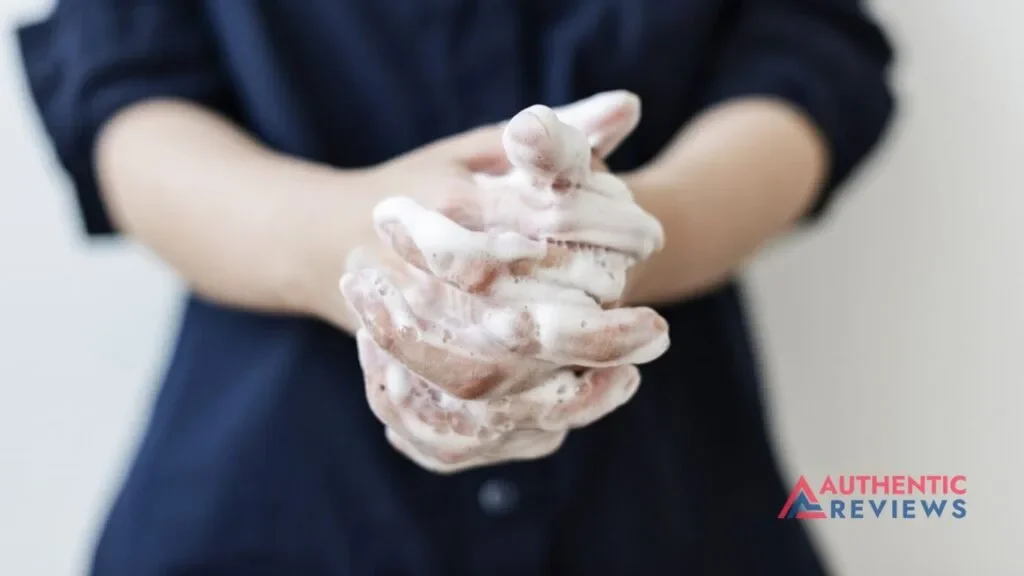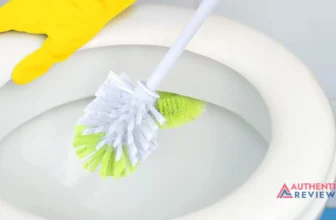How To Get Polyurethane Off Hands (Water-Based and Oil Based)

Polyurethane is a versatile, strong material that provides flexibility and durability. This makes it ideal for furniture, flooring, and automotive parts. But polyurethane can be hard to remove once it comes into contact with your skin. So if you find polyurethane on your hands, you’ll need to know how to get polyurethane off your hands quickly and safely.
In this quick guide, we’ll discuss the best methods for removing polyurethane from your hands. We’ll also cover important safety tips to remember when dealing with polyurethane.
Read Also How to Keep Your Grill from Rusting

Methods to Remove Water-Based Polyurethane from Hands
Water-based polyurethane is a safer alternative to oil-based options. It’s easier to clean up and removes more easily from your skin. To remove polyurethane from hands:
- Start by gently washing your hands with soap and warm water. This will help break down some of the polyurethane.
- If the polyurethane is still present, use a nail file or emery board to scrape away the remaining product gently. Try to avoid scrubbing too hard, as this may damage your skin.
- For tough spots, use a pumice stone or similar abrasive tool to help break down and remove the last of the residue.
- Rinse off your hands with warm water, then dry them thoroughly with a clean towel.
Methods to Remove Oil-Based Polyurethane from Hands
The following are the most effective ways to get oil-based polyurethane off your hands:
Using Soa and water
The first option for removing polyurethane from your hands is soap and water. Soap and water are often the easiest way to remove light deposits of polyurethane. Begin by running warm water over your hands. Then apply a generous amount of liquid soap or detergent directly onto the affected area. Gently massage the soapy solution into your hands before rinsing with warm water. Repeat this process a few times until the polyurethane is gone.
Removing with mineral spirits or denatured alcohol
The second method for removing polyurethane from your hands is mineral spirits or denatured alcohol. This option works especially well for larger deposits of polyurethane. To start, put on a pair of rubber gloves to protect your hands. Then pour the solvent onto a damp cloth or paper towel and rub it into the affected area. Be sure to move in circular motions until all traces of polyurethane are gone. Finally, wipe away any excess residue with a dry cloth and wash your hands with soap and water.
Wiping away excess residue with a dry cloth
After using mineral spirits or denatured alcohol, wiping away any remaining residue with a dry cloth is important. This will help ensure that no trace of the solvents is left on your skin. Make sure to use a lint-free cloth and move in gentle circular motions until all traces of the solvent have been removed. Once finished, be sure to wash your hands thoroughly.
Using lemon juice or vinegar
Another option for removing polyurethane from your hands is to use lemon juice or vinegar. Both options effectively break down the bonds between the polyurethane and your skin. To start, dilute one part of lemon juice or vinegar with two parts of water in a small bowl. Then soak the affected area in the solution for five minutes before rinsing and washing off with soap and water. This may need to be repeated several times until all traces of the polyurethane are gone.
Using an exfoliating scrub
An exfoliating scrub is also effective at removing polyurethane from your hands. Start by dampening your hands with warm water. Then apply a generous amount of gentle exfoliating scrub to the affected area. Gently massage the scrub into your skin in circular motions for several minutes. Finally, rinse with warm water and wash your hands with soap before drying off completely.
Applying rubbing alcohol as a last resort
If the above methods do not work, rubbing alcohol may be used as a last resort. Pour a generous amount of rubbing alcohol onto a clean cloth or paper towel and rub it into the affected area. Be sure to move in circular motions until all traces of polyurethane are gone. Finally, wipe away any excess residue with a dry cloth.
Precautions to Take When Removing Polyurethane
When dealing with polyurethane, it’s important to take certain safety precautions. Here are some tips to keep in mind when removing polyurethane from your hands:
Using proper protective gear
The first step is to wear proper protective gear, such as gloves and long sleeves. This will help protect your skin from contact with solvents or chemicals that remove the polyurethane. Additionally, wearing safety glasses and a respirator mask is important if you’re dealing with large amounts of polyurethane.
Ventilate work areas
The area should also be adequately ventilated. This is especially important if using solvents or chemicals to remove polyurethane. Use fans and open windows to ensure the air in your work area remains clear and free of fumes.
Exercise caution when working with solvents
Solvents can be dangerous if not used properly. When using solvents, read and follow all manufacturer instructions closely. Also, store solvents safely away from heat or ignition sources.
Wear gloves and long sleeves for full protection
Gloves can also provide extra protection when dealing with polyurethane. Make sure to choose chemical-resistant gloves long enough to cover your entire arm. Additionally, wear long sleeves and closed-toe shoes for full protection.
Read Also: How To Paint Metal Fireplace Surround

Tips for Future Use of Polyurethane
Finally, here are some tips for avoiding contact with polyurethane in the future:
Avoid contact with skin as much as possible
The first step is to avoid contact with polyurethane on skin as much as possible. Wear protective gloves and long sleeves when handling polyurethane or other hazardous materials. Additionally, use tools such as brushes and scrapers when dealing with large amounts of polyurethane.
Clean up spills immediately
The spills should also be cleaned up immediately. Wear protective gear and use appropriate cleaning supplies to remove polyurethane from surfaces or clothing. Additionally, avoid direct contact with any contaminated materials and dispose of them properly.
Dispose of contaminated items properly
The contaminated items should be disposed of properly. This can include anything from rags and wipes to gloves and clothing. Place all contaminated items in an airtight bag before discarding them in a proper waste bin.
Monitor indoor air quality to ensure a safe work environment
The work environment can also affect the safety of your workspace. Make sure to monitor indoor air quality and take steps to reduce any contaminants or fumes in the area. This may include providing adequate ventilation and using fans to keep air flowing. Additionally, regularly inspect for any signs of mold or mildew, which can pose a serious health hazard.
Following these tips can help ensure a safe and healthy work environment.
What is the Danger of Polyurethane on Hands?
Oil-based Polyurethane is a synthetic material that can cause irritation and even allergic reactions when it comes in contact with the skin. It is used in many home improvement products, such as sealants, adhesives, and paints. People may experience redness, itching, burning, or skin swelling when exposed to polyurethane without proper protection.
More severe cases can cause an allergic reaction or even long-term health risks. To prevent this, it is important to take the necessary steps to protect yourself when working with polyurethane and remove any traces from your hands as soon as possible.

Frequently Asked Questions
To remove dried polyurethane, use lemon juice, vinegar, a water solution, an exfoliating scrub, or rubbing alcohol. Take safety precautions when using solvents or chemicals to remove the polyurethane.
No, Vaseline does not effectively remove adhesive from the skin. To effectively remove adhesive from the skin, use a lemon juice or vinegar and water solution, an exfoliating scrub, or rubbing alcohol.
Oil-based polyurethane can be hazardous to the skin if not properly removed. It can cause irritation and even allergic reactions when it comes in contact with the skin. Protecting yourself when working with polyurethane and removing any traces from your hands is important.
Yes, baking soda can be used to remove polyurethane. Mix baking soda and water to create a paste, then apply it to the affected area. Be sure to move in circular motions until all traces of polyurethane are gone. Finally, wipe away any excess residue with a dry cloth.
Yes, oil can help break down the polyurethane. To do so, you must use an oil-based solvent or mineral spirits to dissolve it. When dealing with these solvents, take all necessary safety precautions and read the manufacturer’s instructions carefully.
Conclusion
Removing polyurethane from your hands is a relatively simple task. For best results, use a combination of dish soap and warm water. Additionally, you can use an abrasive scrubber or cotton ball soaked in acetone to break down any remaining residue. Always remember to wear gloves when handling polyurethane in the future, as it is a hazardous material that can cause skin irritation.
If you find yourself with polyurethane stuck on your skin, don’t panic. You can get off quickly and easily with the right materials and some elbow grease. Just follow the tips above on how to get polyurethane off hands, and you’ll be good as new in no time.
Remember, prevention is the best cure. Whenever possible, wear gloves when handling polyurethane and other potentially hazardous materials. This will help keep your skin safe and healthy.





